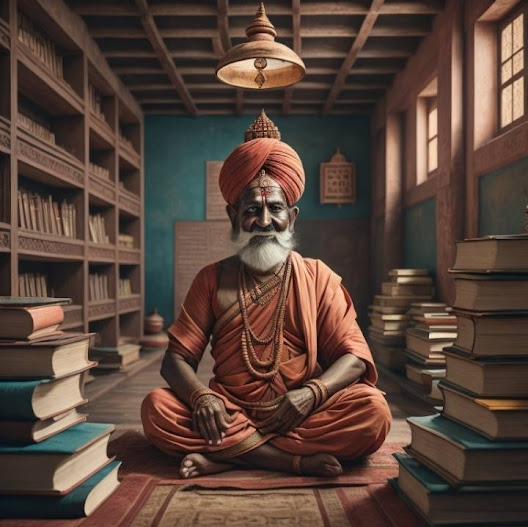India, known for its rich cultural heritage, has a long-standing tradition of education and knowledge dissemination. One of the oldest and most revered systems of education in ancient India was the Gurukul. The Gurukul system, which translates to "teacher's family" or "teacher's house," was a unique and holistic approach to education that shaped the minds and characters of countless individuals for centuries. Let us delve into the world of Gurukuls, exploring their historical significance and their place in modern India.
In the ancient Gurukul system, students lived with their guru (teacher) in an ashram (hermitage) for an extended period, often ranging from several years to even a decade. The gurus were highly respected and knowledgeable individuals who imparted education not just in academic subjects but also in moral values, life skills, and spiritual teachings. Students were required to dedicate themselves wholeheartedly to their studies and perform various chores in and around the ashram as a part of their education.
The curriculum of a Gurukul encompassed a wide range of subjects, including mathematics, astronomy, philosophy, ethics, arts, music, dance, and physical education. The education was imparted through an oral tradition, with the guru delivering lectures and engaging in discussions with the students. The emphasis was on experiential learning, where students learned through observation, imitation, and hands-on practice.
The Gurukul system fostered a close bond between the teacher and the students, creating an environment conducive to holistic development. Students not only gained knowledge but also imbibed qualities like discipline, humility, respect, and a strong work ethic. The Gurukul system focused not just on intellectual growth but also on the overall well-being of the students, nurturing their physical, emotional, and spiritual dimensions.
However, with the advent of colonialism and the subsequent modernization of India's education system, the Gurukul system gradually declined. Western-style schools and universities became the new norm, and the Gurukul system was relegated to the realms of history. Nonetheless, the essence of Gurukul education continued to inspire educationists and scholars throughout the years.
In recent times, there has been a renewed interest in reviving and reimagining the Gurukul system in India. While the traditional Gurukuls are rare to find, there are various contemporary institutions that have adopted the Gurukul ethos and principles in their educational frameworks. These modern Gurukuls aim to strike a balance between the traditional wisdom of the Gurukul system and the demands of a rapidly changing world.
These new-age Gurukuls, often referred to as alternative education institutions, emphasize personalized learning, experiential education, and a harmonious blend of academics, arts, and physical activities. They seek to provide a holistic education that nurtures the mind, body, and soul of the students. These Gurukuls focus not just on academic excellence but also on character-building, ethical values, and the development of essential life skills.
Today, several renowned Gurukuls have emerged in different parts of India, each with its unique approach and philosophy. Some notable examples include The Heritage School in Gurgaon, Abhaya Gurukul in Maharashtra, Anand Niketan Gurukul in Gujarat, and The Indian School of Business Gurukul in Hyderabad. These institutions strive to create a conducive environment for students to explore their potential, develop critical thinking, and become well-rounded individuals.
The resurgence of the Gurukul system is a testament to the timeless wisdom embedded in ancient Indian educational traditions. By combining the best of both worlds - the wisdom of the past and the innovations of the present - these modern Gurukuls offer a promising alternative to the conventional education system.
In conclusion, the Gurukul system, with its emphasis on holistic education, values, and character-building, has left an indelible mark on India's educational landscape. While traditional Gurukuls may have faded into history, their essence lives on in the modern Gurukuls that strive to impart a well-rounded education to the students of today. As India moves forward, it is heartening to witness the revival of these Gurukuls, ensuring that the legacy of ancient Indian education endures and continues to shape generations to come.

Comments
Post a Comment
We value your thoughts and insights. Share your perspective on this article and connect with fellow readers. Your comments drive conversations, adding depth to the exploration of ideas. Join the discourse and be a part of our vibrant community of curious minds!